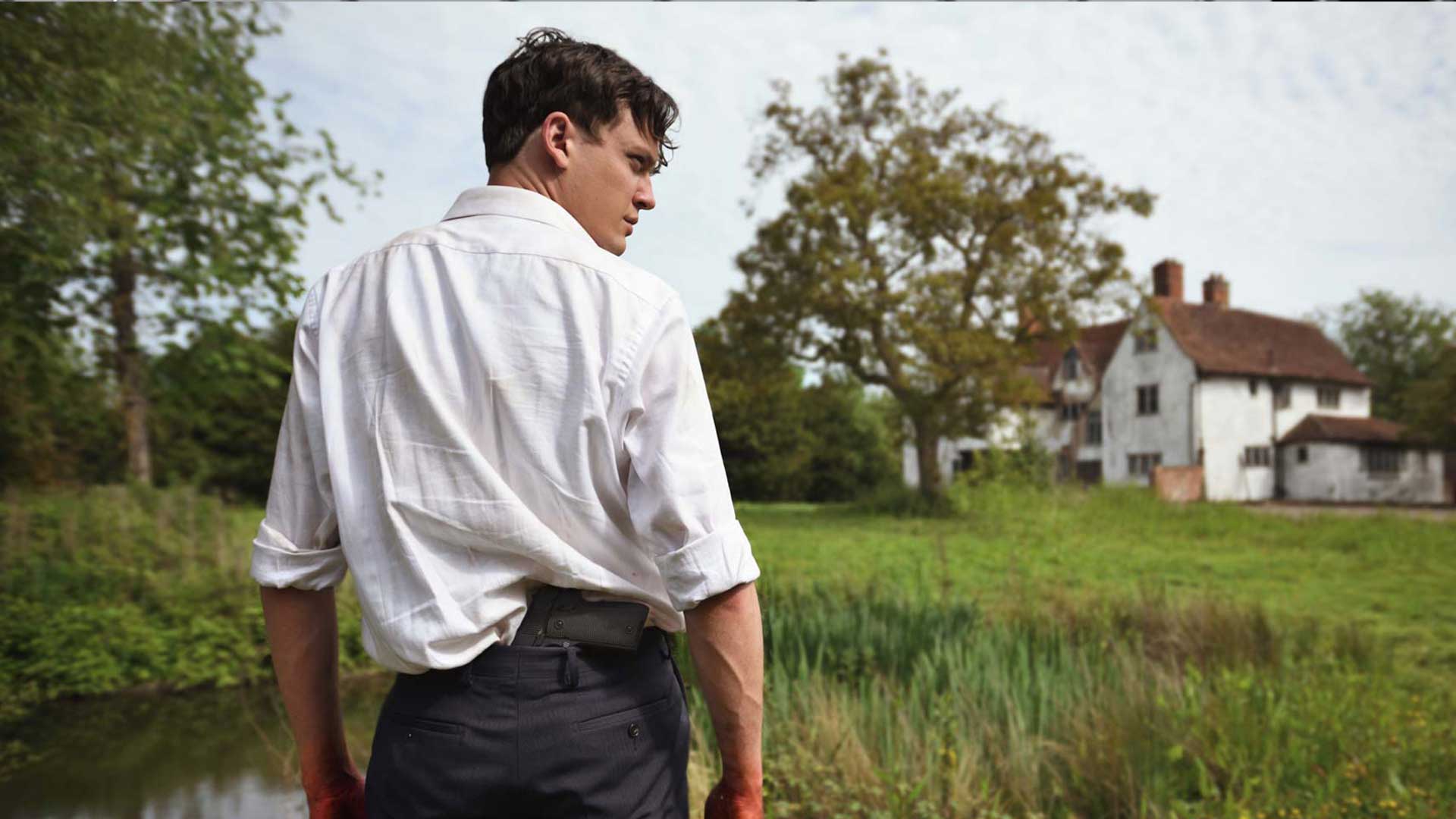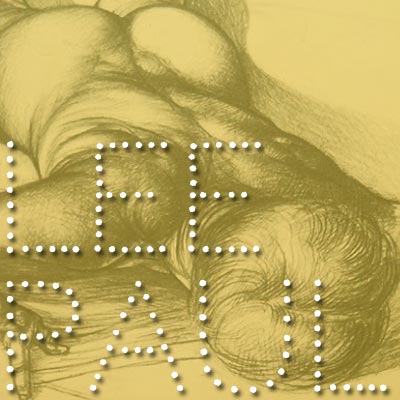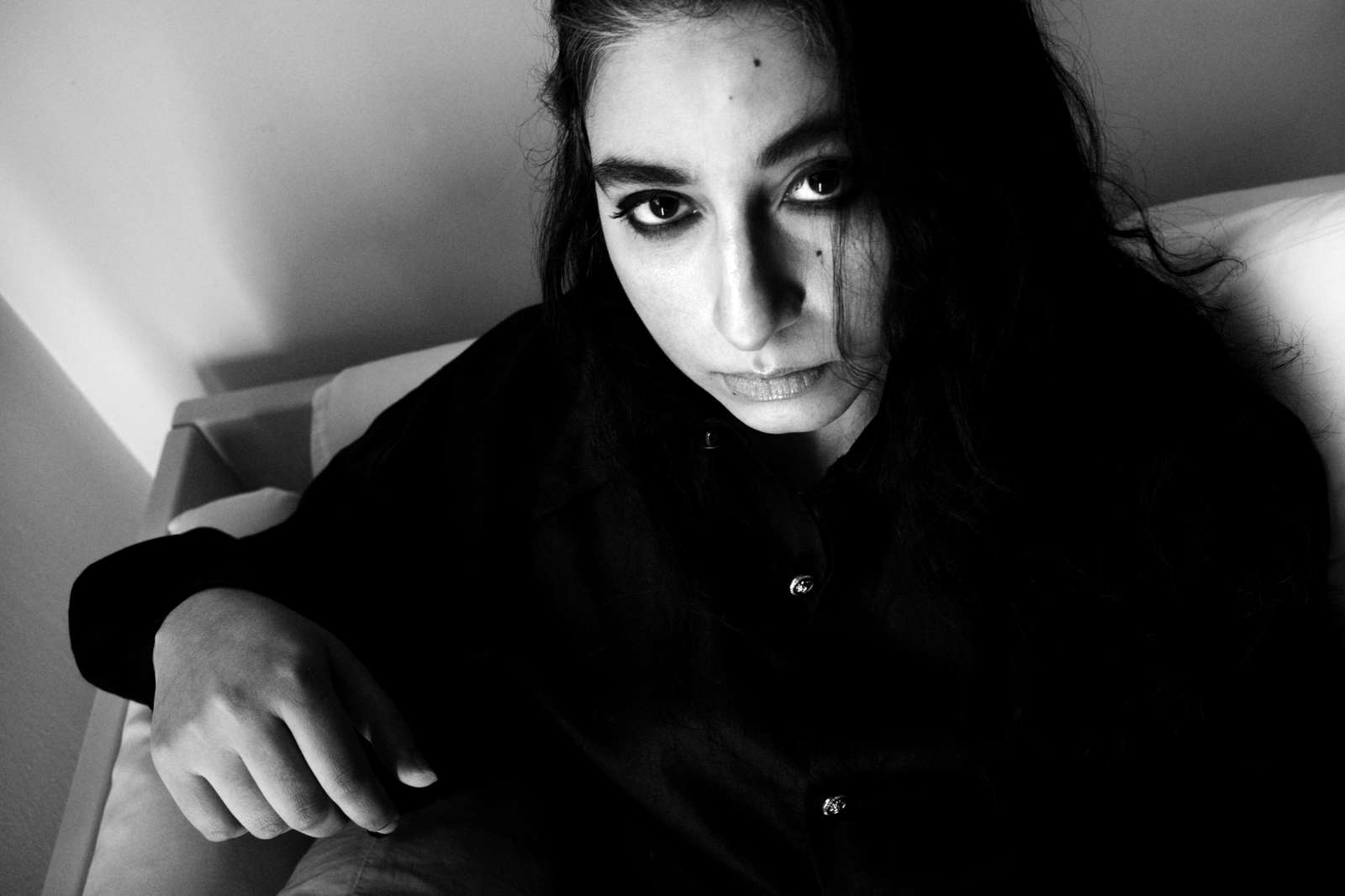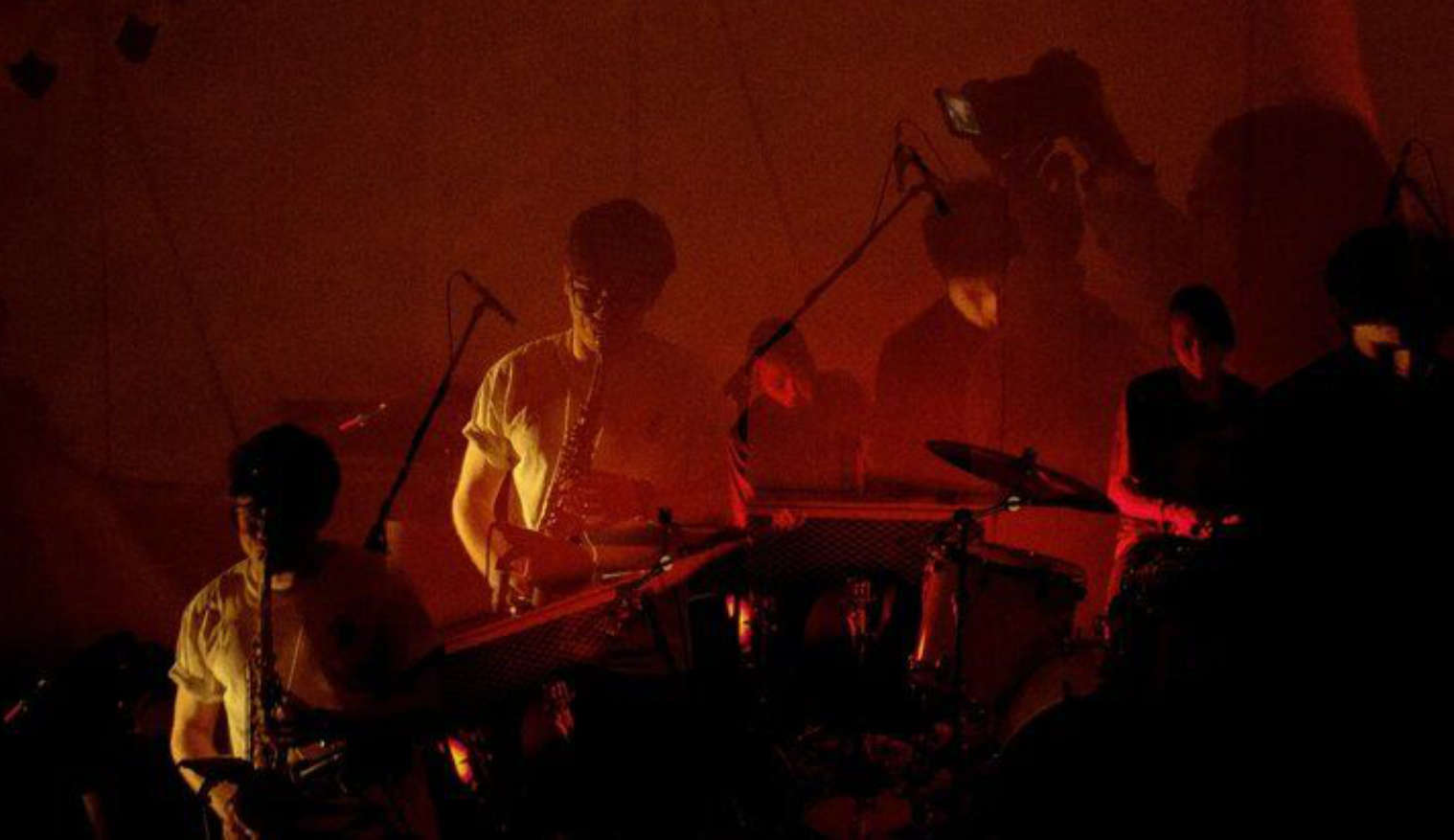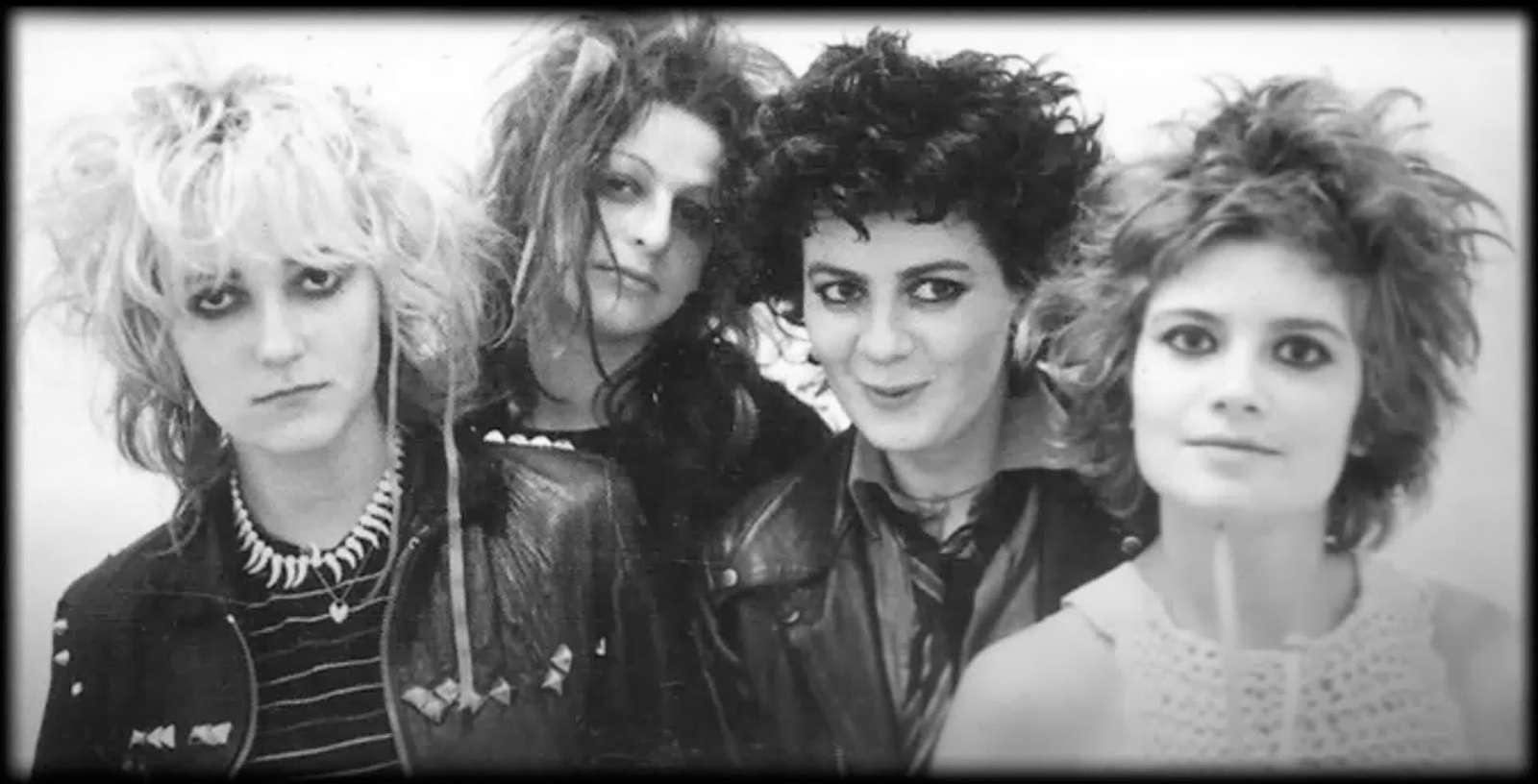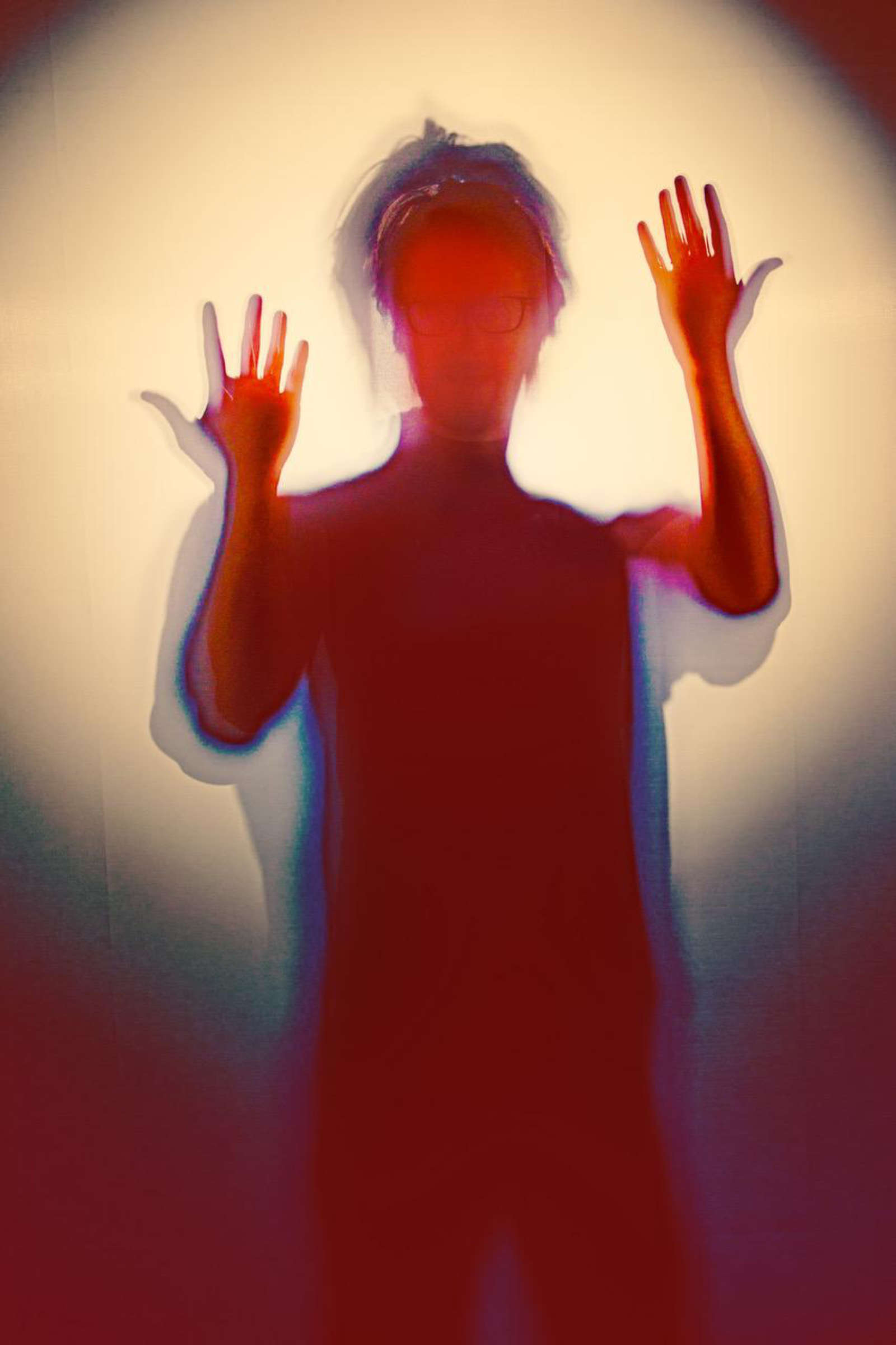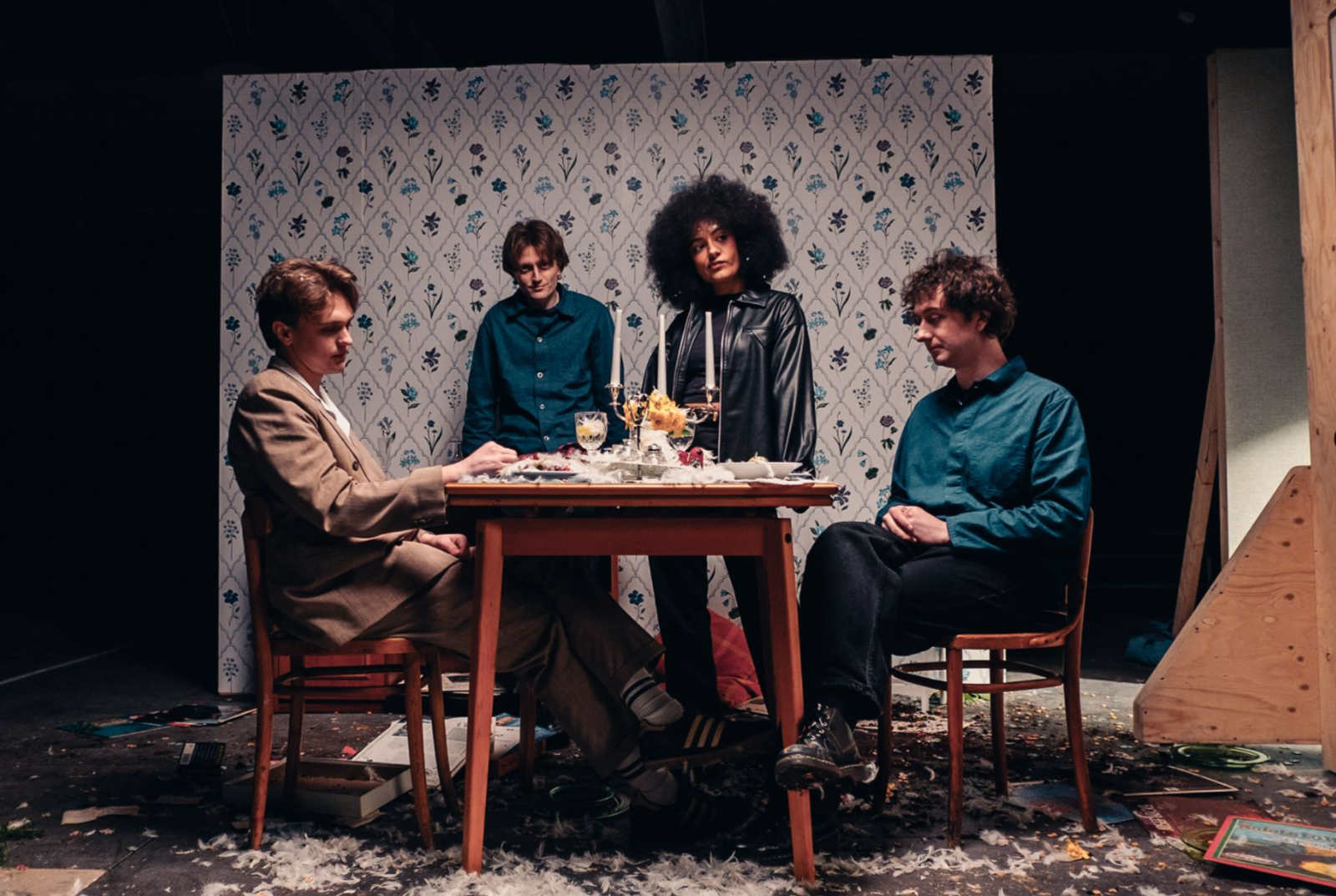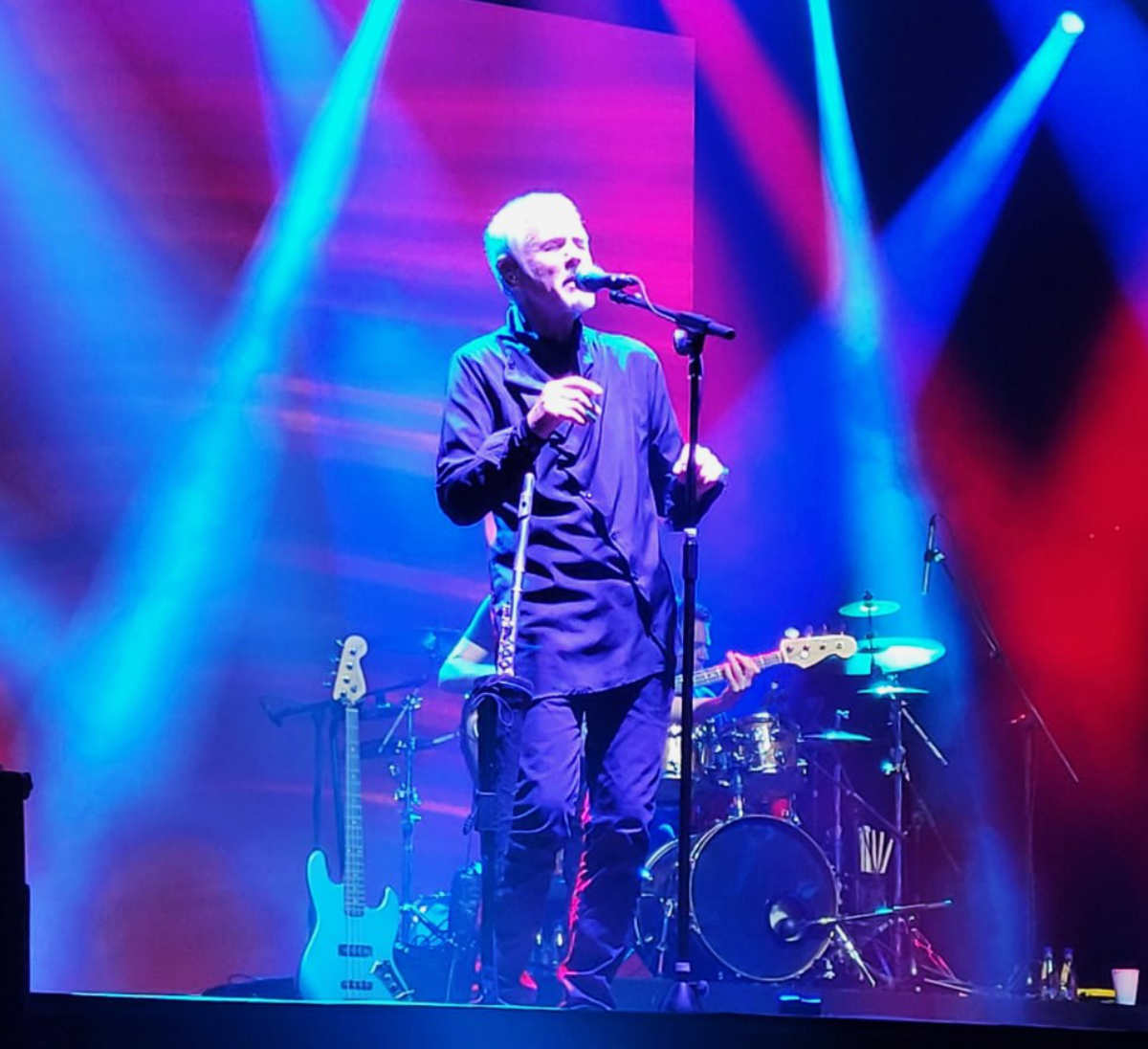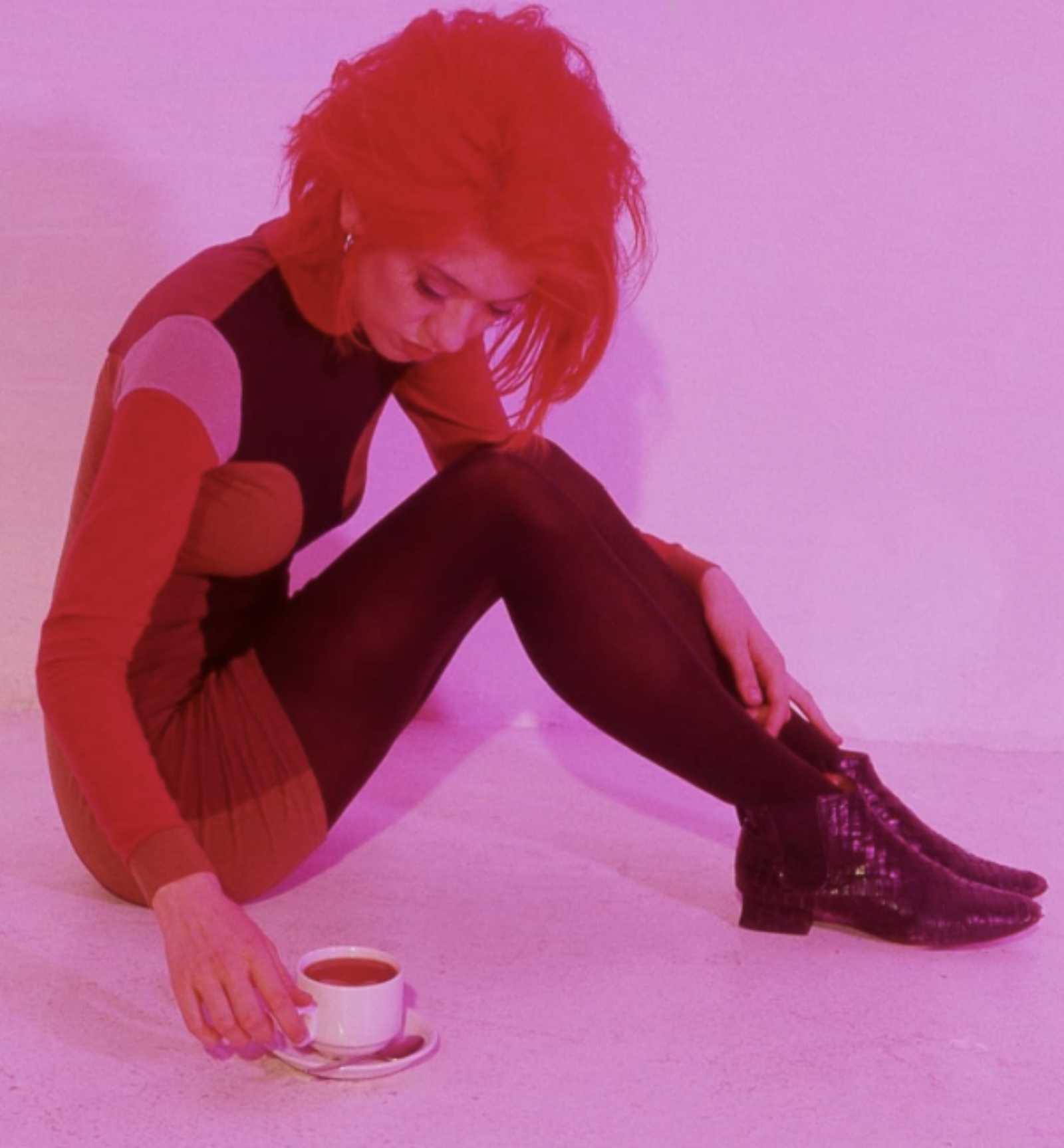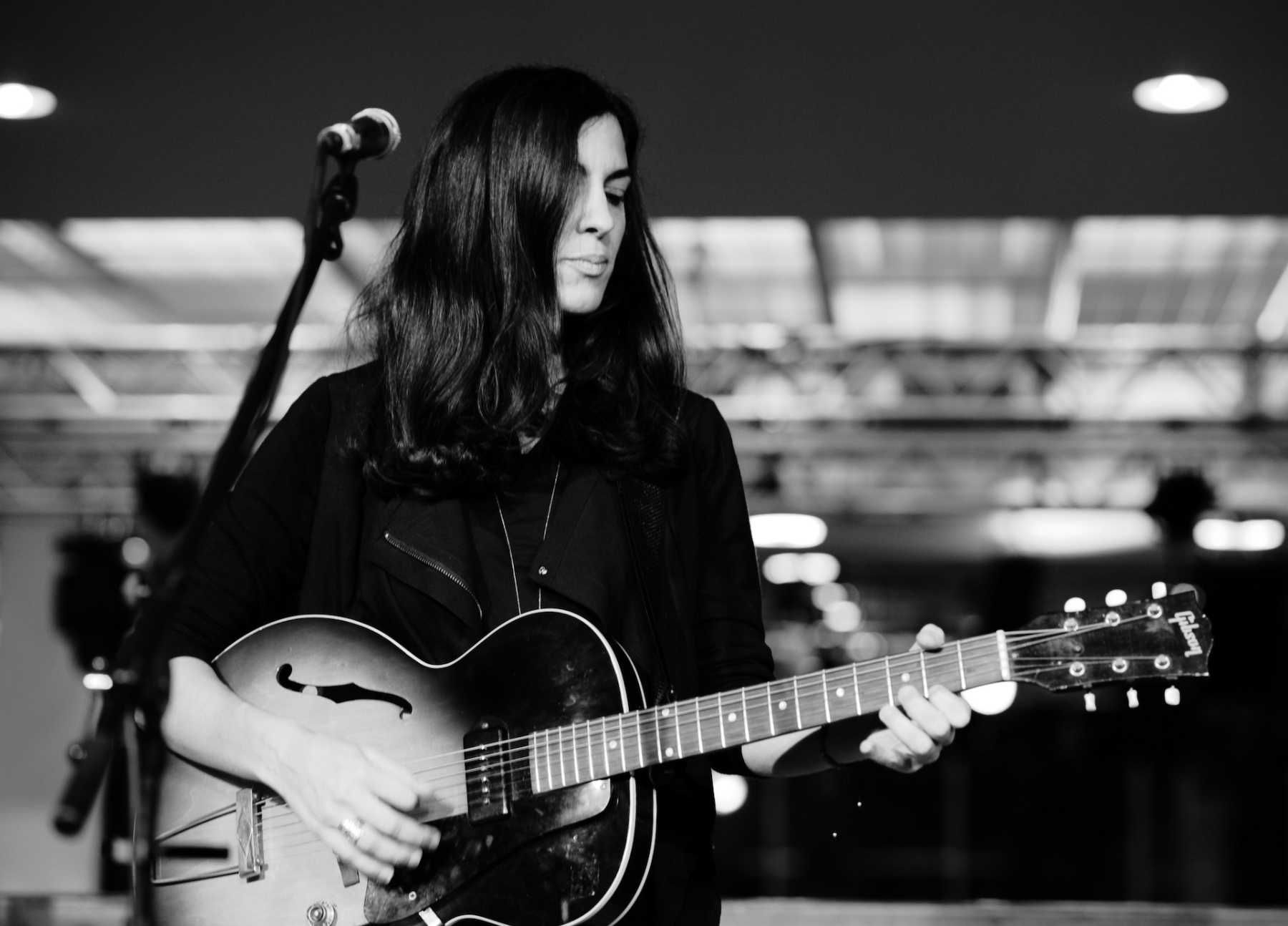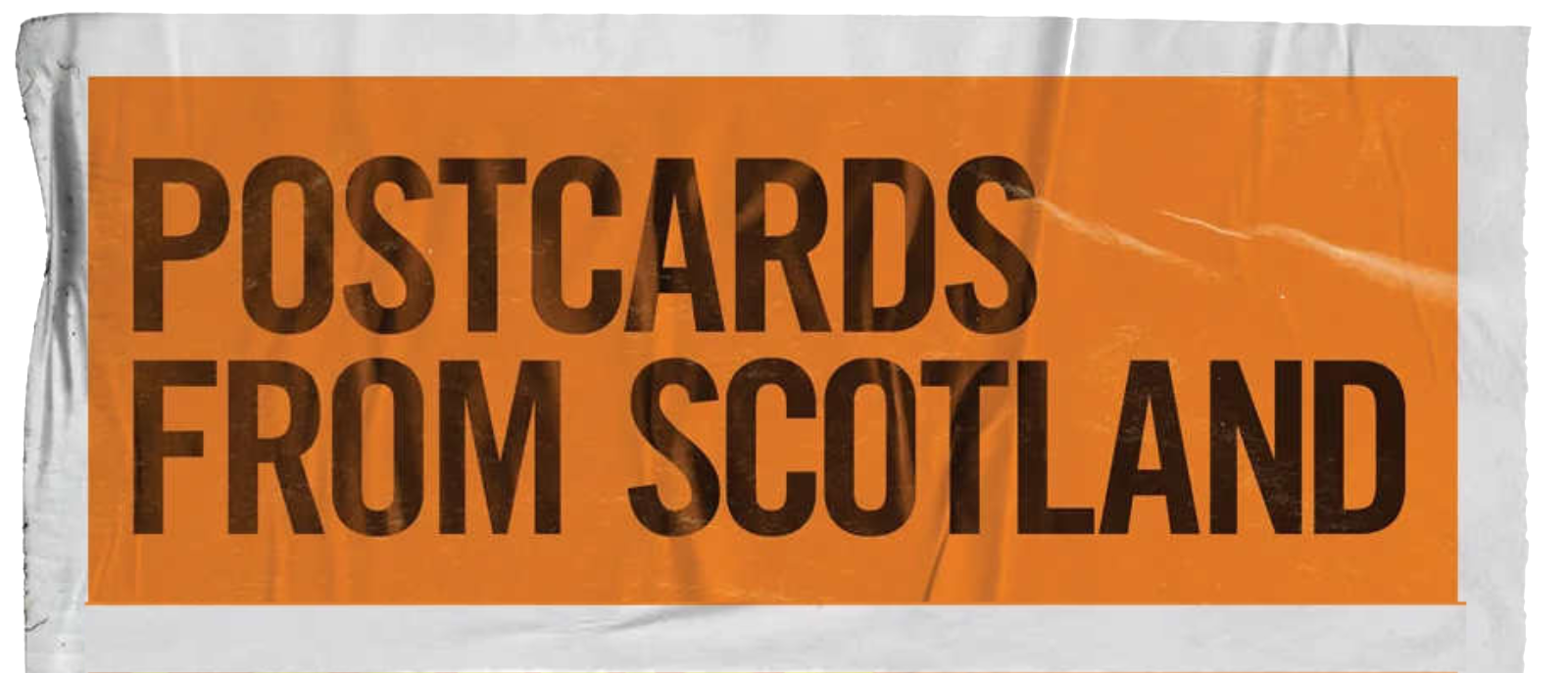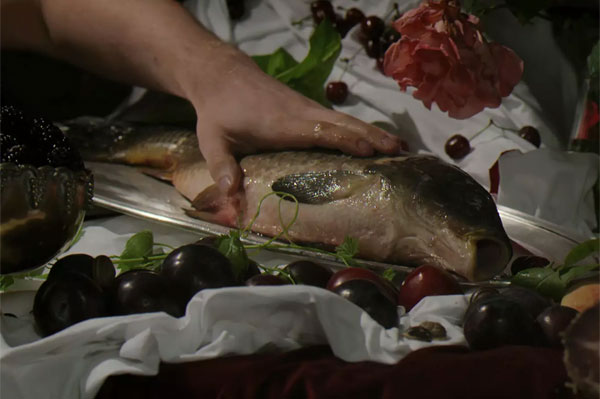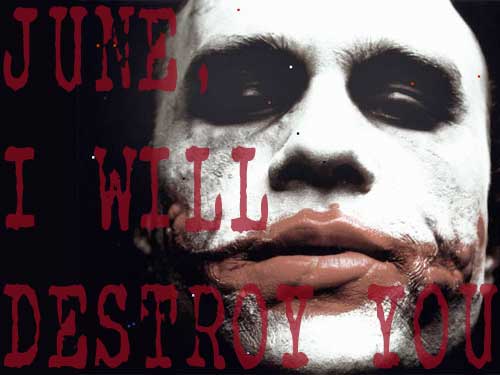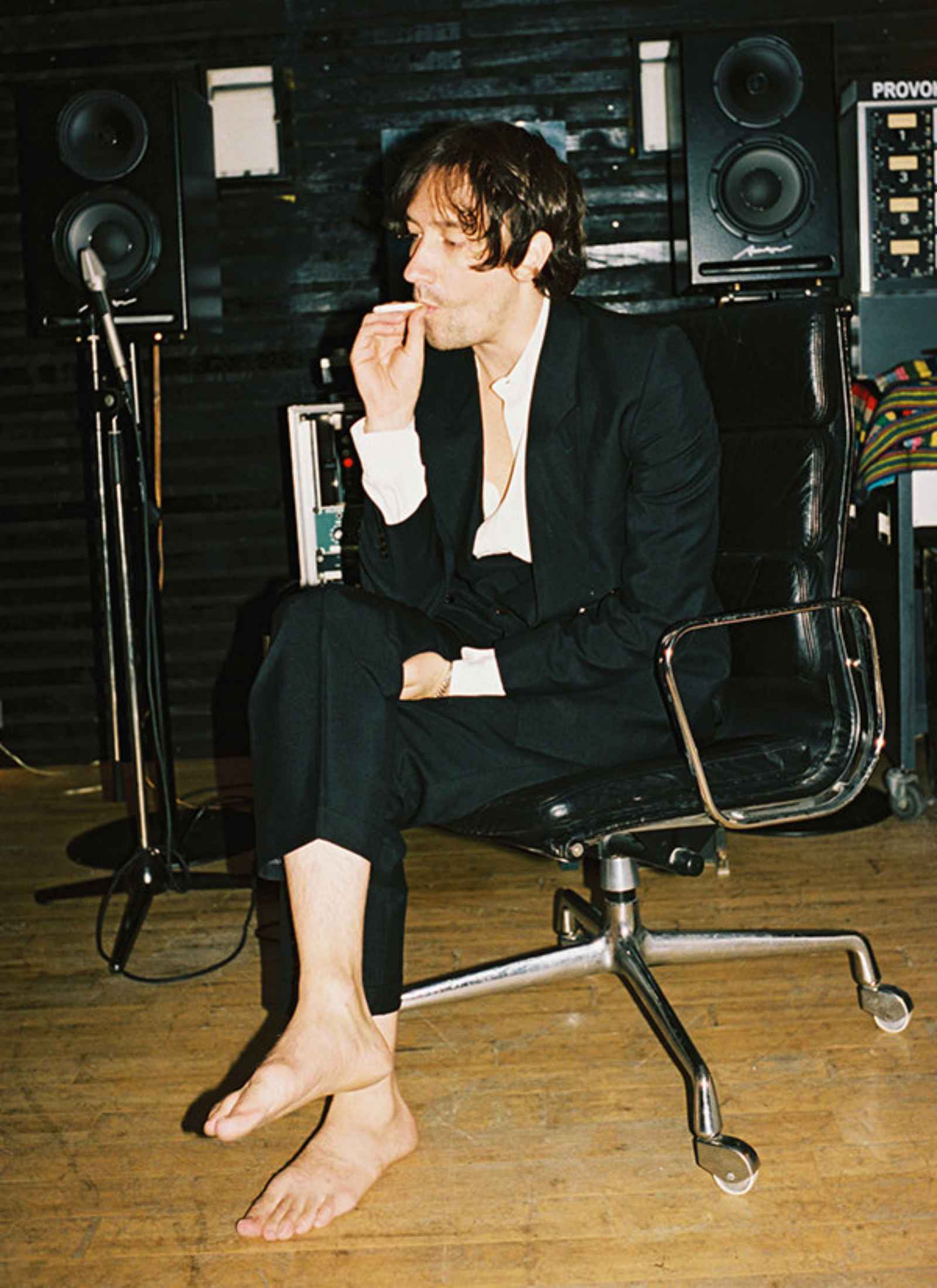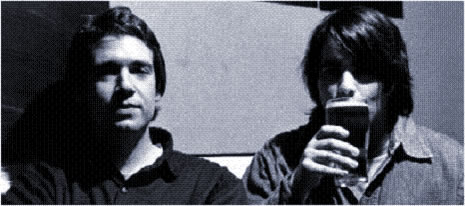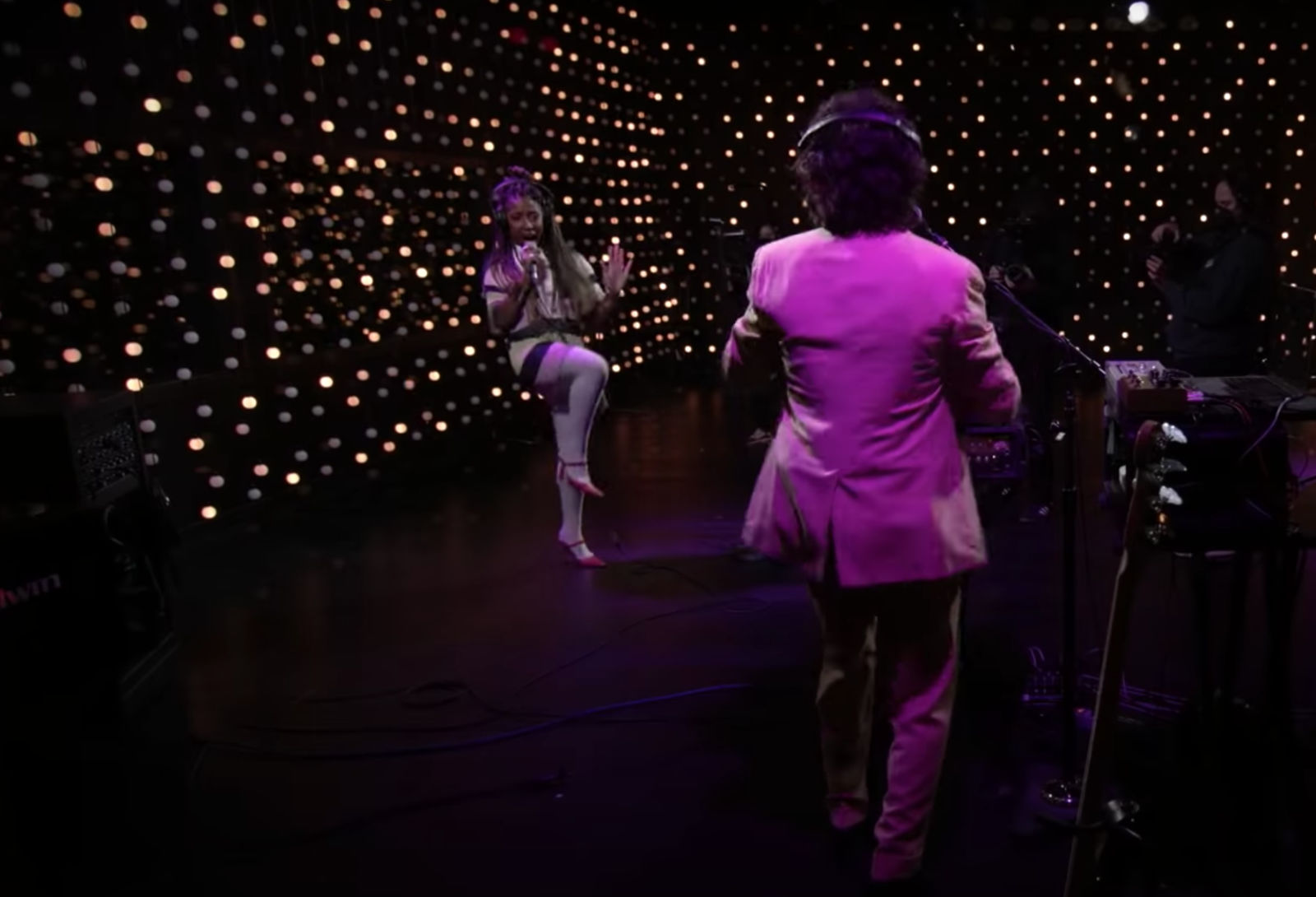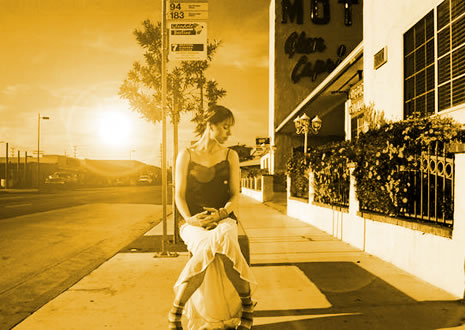The World We Knew is the debut feature film from Powis Square Pictures a collective group of film-makers from London. We’ve featured their short films in the past including the one they made that had the soundtrack by Mick Jones of the Clash and then there was the one that featured a ventriloquist puppet taking cocaine and levitating. This full length feature is a new move for the PSP crew and they’ve turned out one of the creepiest and coolest films I’ve seen all year.
The set-up is simple. When an (unseen) armed robbery goes wrong a gang of disparate and desperate men are forced to hole up in a safe house for the night. There’s the stoic leader, the old-timer on his last job, the young innocent out of his depth, the conniving spiv, the boastful boxer. All easily recognisable film-noir archetypes. What happens to them over the course of the night is full of twists and turns as the house that holds them seems intent on driving them insane. It’s not a gangster film, it’s more Waiting For Godot than any kind of Essex boys with shooters flick. And it’s never a simple horror film either, there are no cheap jump scares. It’s an original and innovative film that merges genres and builds slowly until you are encompassed by its malevolent shadow. It’s lean and mean with a wicked sense of humour.
Filmed on location near Colchester in a decrepit manor house, The World We Knew features a quality cast including Struan Rodger and Johann Myers and a superb performance by Irish actor Finbar Lynch as the malevolent gang leader Carpenter (who I’m informed was named in tribute to the horror film director John Carpenter).
The film premieres as part of the legendary genre festival Fright Fest. I got to speak to three of Powis Square Pictures, directors Luke Skinner and WW Jones and producer Andy Orr to find out how they came to make the film and why it took so long to get a feature out.
OUTSIDELEFT: Your short film Over & Over, came out in 2015 and I’m guessing, as that title is an alternative title for the song The World We Knew and there are some similarities in theme and cast, that the idea for this film dates back until at least then…
Andy Orr: Before that actually… The first thing we made as Powis Square Pictures was a short film with Alice Lowe which was a kind of Bunuelian folk-horror about a couple who can’t find their way out of a field. The guy who owned the field we were shooting in said ‘it’s a shame you’re not making a haunted house film…’ and he led us through some trees and overgrown bushes and there was this near derelict old house.
WW Jones: We’d just finished writing The World We Knew and then we saw this house and it looked like it had been built for the film. It was probably finding that that gave us the push to try to make the film any way we could.
Luke Skinner: The owner let us paint and dress the house and shoot in it for free. Without that the film probably never would’ve been made. So yeah, we had a haunted house script and we had free access to a genuine haunted house.
OUTSIDELEFT: It’s an incredibly creepy setting. And as the movie plays out the house becomes a character in its own right. It has its own logic. Its own demands. I like how you refer to it as a real haunted house.
Andy Orr: Something was up in that place. There were corners that were just a bit too cold. The last owner, who lived there by herself, went mad like a modern day Miss Haversham. Apparently, she’d had her heart broken too. Martina, one of our make-up artists had this beautiful, wise old dog and on the first day he came on set he simply refused to stay in the house. He just backed out of it very slowly, whimpering.
OUTSIDELEFT: So you had the script and the location…
WW Jones: ...and no money. For a while we tried chasing funding. Which is a relentless grind. And getting funding for anything that falls outside a very narrow set of parameters is near impossible and it takes up all of your time. So we decided we’d just do it ourselves. Sometimes you have to get things done in any way you can.
OUTSIDELEFT: What are the problems of making a micro-budget film? How do you make a movie when you’ve got no money?
Andy Orr: Having no money affects every possible decision and every artistic choice. You are forced to work on wit, bluster, subterfuge. It is utterly and profoundly exhausting. We were lucky to be able to put together a group of incredibly talented people who bought into our idea of the film and helped us out. From the actors to the crew and on into post-production. Everybody went above and beyond.
WW Jones: No money and totally independent means that you’re feeling your way through at every stage. You have to become your own casting directors, set builders, prop makers etc etc You do everything you can yourselves. But you’re also totally free, with no-one looking over your shoulder trying to soften the rough edges. When there’s no money propping you up it gives you amazing confidence and drive. There’s no safety net if you fuck it up. On set, under pressure you’ve got to be all in all the time.
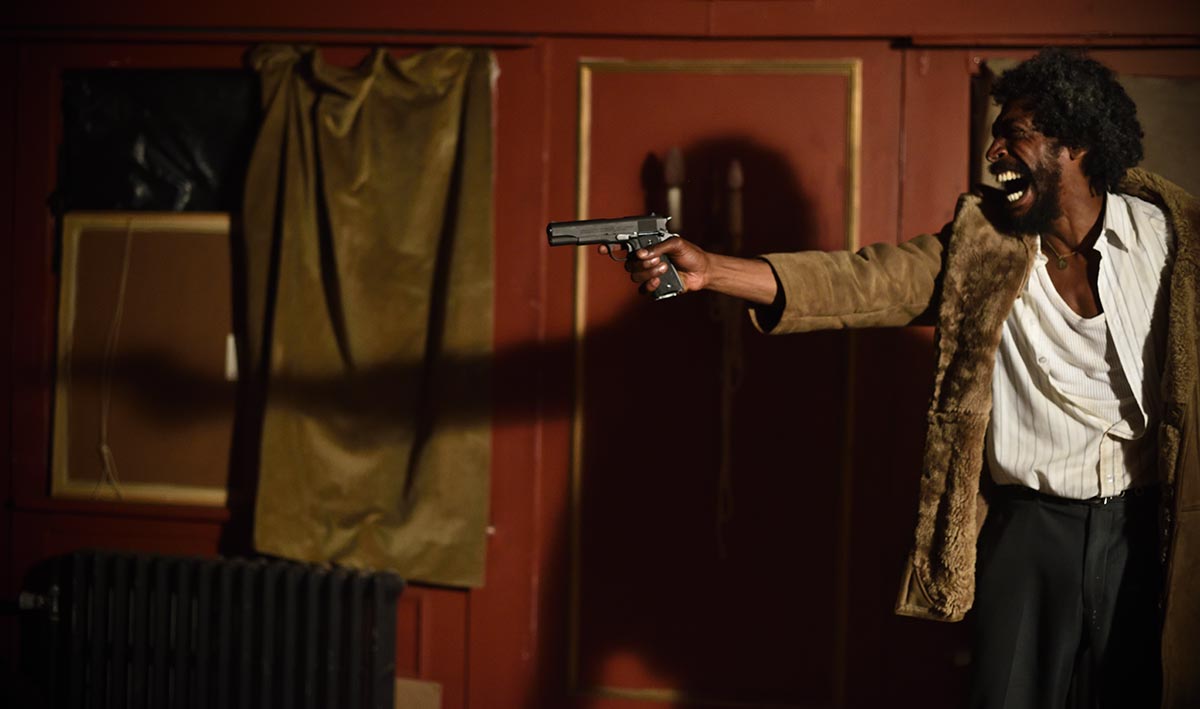
Luke Skinner: Time is the killer. The clock is always against you. It’s not like writing a book or a painting where you can rip it up and start again. If you set up a shot and its not working – you’ve got to get on with it because you’ve only got a limited amount of time to get all the footage in the can. You’ve got a certain amount of pages to shoot each day and they’ve got to be done that day or you’re in big trouble. You’ve got a tiny budget that’s being pulled this way and that. It makes you get creative.
WW Jones: We always wanted to push the bar with the way the film looked. The costume and sets. When you’re working with no money, you can still make a film that looks great but often this is one of the first things to get sacrificed. The sets look rubbish and everyone’s wandering about in Primark clothes. We wanted The World We Knew to be timeless, stylish and cool. I think we achieved that by going to town on the elements that we could control.
Andy Orr: Our main location was incredibly imposing but some of the rooms were blank canvasses and needed large amounts of set design. We spent a long time working to make them look amazing on film. Finding furniture and props in charity stores and junk shops. Furniture that had been abandoned in the street... Each room had its own concept – the diseased lung, the red room, the faded William Morris wallpaper…
WW Jones: We went over budget to get just the right wallpaper and had to stay in a caravan for a while instead of an Air BnB. It was all important. It was all building a world. The music too. We’d worked with The Limiñanas before and we were lucky that they had the time and the inclination to come up with this incredible noir-ish soundtrack for us. And, as you suggested earlier, the Over & Over film was a stepping stone into this world. It was our intention to create our own cinematic universe like the directors and artists we admire. This is not the real world, it’s heightened and stylised. It’s cinematic.
OUTSIDELEFT: Who are the film-makers that do inspire you? Or individual films
Luke Skinner: David Lynch, Scorsese, Lynne Ramsey, Paul Thomas Anderson, Hitchcock, Powell & Pressburger, Agnes Varda… That’s just off the top of my head. In terms of inspiration for making films with no money… John Cassavetes, Melville and Fassbinder. Watch and see how they did it. They’ll have been making choices that big budget films don’t have to. Look at most of Cassavetes stuff – it’s handheld and performance driven. And we all love a lot of low-budget genre films. Noirs like Blast of Silence. A lot of obscure horror films. Some of the old Roger Corman movies.
WW Jones: Aki Kaurismaki, the way his films look, especially the sets which look like David Lynch doing working men’s clubs. And his use of deadpan jet black comedy. We like films that can do funny, sad, scary and all the feelings at the same time. It’s dull when films only work in one register so we figured we’d try and do it all. Jean Pierre Melville is a huge inspiration. The colour palettes and the way he shoots his actors. Kaurismaki and Melville both use the most brilliant shots of men looking, at other men, at women, at stuff. These shots have a pure cinematic quality.
The World We Knew premiers at Fright Fest on October 24th details here
Online: Powis Square Pictures
